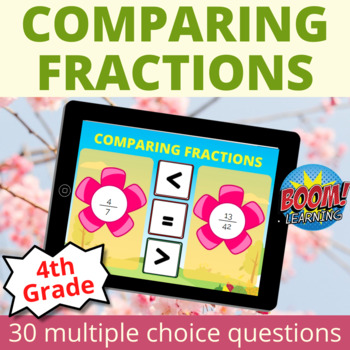Boom Cards Compare Fractions with like and unlike denominators (Spring)
- PDF
- Internet Activities
Description
This Compare Fractions Boom Cards will help to reinforce the concept of comparing fractions with like and unlike denominators. Students who need some practice on topic Compare Fractions with like and unlike denominator whether it's independently or together in a class or group setting can use this Spring-themed Compare Fractions Boom Cards.
Great to use in a home school, distance learning or blended learning environment.
If you are looking for comparing fractions digital activity, look no further. This compare fractions Boom Cards makes a great distance learning activity - thanks to Boom Cards' self-checking feature.
Split the deck (a total of 30 self-correcting digital task cards) however you'd like. You can assign them to different groups of students or for different class periods. You can differentiate instruction and assign it to individual students as well. To do this, go to the CLASSES tab, click inside the class you need, and then click the drop-down arrow next to the student’s name.


